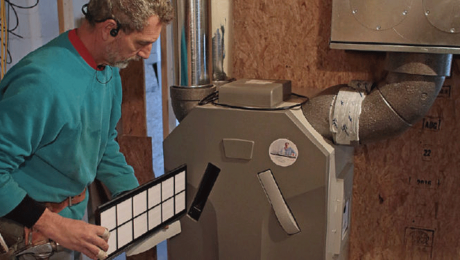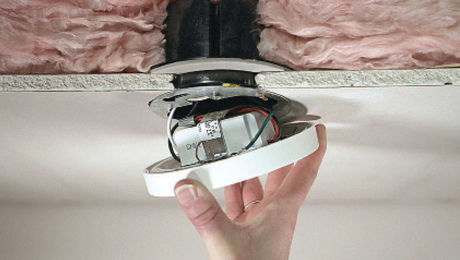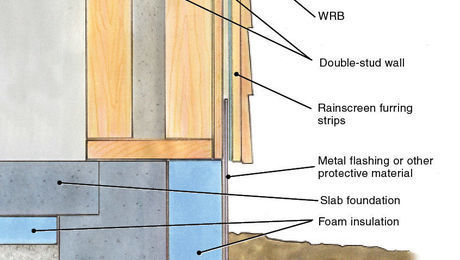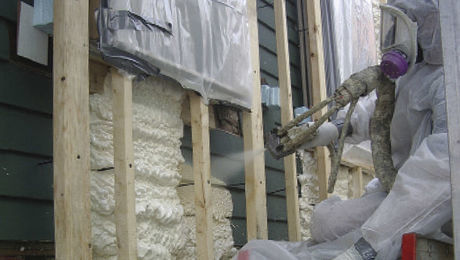The Evolution of Efficiency: Net Zero as the New Normal
Experimentation and learning have led one builder to integrate energy-smart techniques into everyday construction.
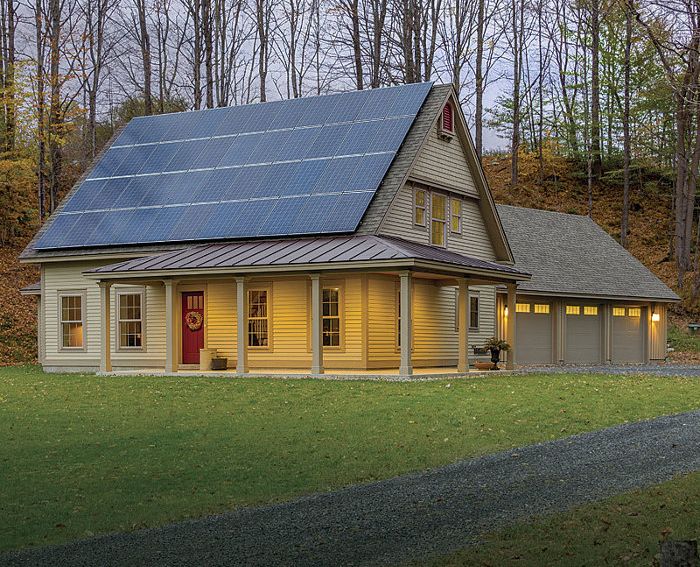
Synopsis: As forward-thinking builders learn new concepts and share their successes and failures with fellow builders, homes they build are beginning to resemble each other in terms of advanced building features. These net-zero-energy homes are often compact two-story designs with the long axis oriented in an east-west direction, and most have triple-glazed windows and walls with high R-values. Increasingly, these homes are equipped with roof-mounted photovoltaic (PV) arrays and are heated and cooled by ductless minisplits. Custom builder Paul Biebel, president of Prudent Living Homes in Vermont, is a prime example of this ongoing evolution.
Biologists note that when unrelated species occupy the same environment, evolutionary changes sometimes alter those species in similar ways. After millions of years, a swimming bird like a penguin, a swimming mammal like a dolphin, and a swimming fish like a shark tend to resemble each other: They all have sleek, smooth bodies and propel themselves with similar motions. This is an example of convergent evolution.
A parallel example is becoming evident in the world of residential construction. In New England, builders who have been paying attention to energy issues for the last 20 years and a subset of builders who attend conferences and constantly push their techniques to the next level are beginning to exhibit signs of convergent evolution. As these forward-thinking builders learn new concepts, experiment with their implementation, and share their successes and failures with fellow builders, homes they build are beginning to resemble each other. These net-zero-energy homes are often compact two-story designs with the long axis oriented in an east-west direction, and most have triple-glazed windows and walls with high R-values. Increasingly, these homes are equipped with roof-mounted photovoltaic (PV) arrays and are heated and cooled by ductless minisplits. Custom builder Paul Biebel, president of Prudent Living Homes in Vermont, is a prime example of this ongoing evolution.
Four decades on the learning curve
The 2500-sq.-ft. house in Norwich, Vt., shown here was completed in 2015, Biebel’s 39th year of building houses. “We build five or six custom houses per year, and it’s probably been six or seven years since we’ve built one just to code minimum,” Biebel says. “Nobody likes to be a guinea pig, but we have incorporated new approaches and technology slowly over the years, little by little.”
Homeowners who invest in these features from the start, including the incremental costs in a 30-year mortgage, end up with very low energy bills. In fact, these features are often cash-flow positive from day 1. Regarding the cost required to hit this mark, Biebel says, “If you add $30,000 up front to make the upgrades, you will have made that money back in six to eight years, all while having no utility bills.” But it’s more than avoiding utility bills; according to Biebel, it’s about making a smart investment. “To me, this is about preparing for the future,” he says. “What is your house going to be worth 10 years from now if it doesn’t perform at that level? I see investing in this technology as protecting your investment.”
For more photos and details, click the View PDF button below:
